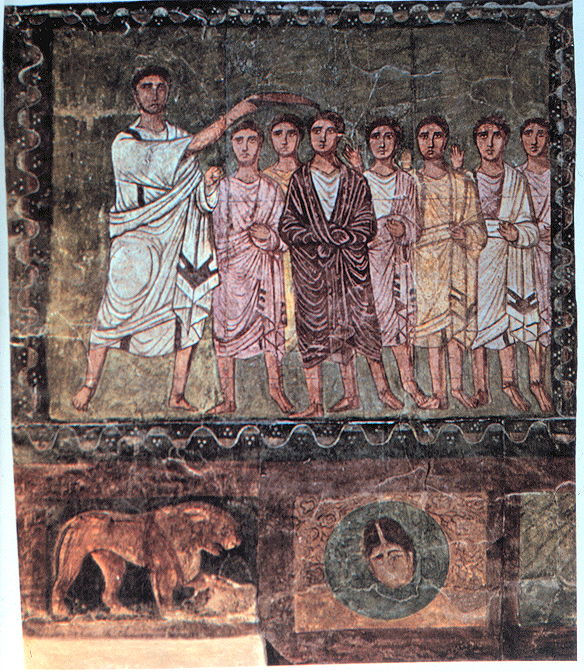|
Psion (computers)
Psion PLC was a designer and manufacturer of mobile handheld computers for commercial and industrial uses. The company was headquartered in London, England, with major operations in Mississauga, Ontario, Canada, and other company offices in Europe, the United States, Asia, Latin America, and the Middle East. It was a public company listed on the London Stock Exchange () and was once a constituent of the FTSE 100 Index. Psion's operational business was formed in September 2000 from a merger of Psion and Canadian-based Teklogix Inc., and was a global provider of solutions for mobile computing and wireless data collection. The Group's products and services included rugged mobile hardware, secure software and wireless networks, professional services, and support programs. Psion worked with its clients in the area of burgeoning technologies, including imaging, voice recognition, and radio-frequency identification (RFID). They had operations worldwide in 14 countries, and customers ... [...More Info...] [...Related Items...] OR: [Wikipedia] [Google] [Baidu] |
Public Company
A public company is a company whose ownership is organized via shares of stock which are intended to be freely traded on a stock exchange or in over-the-counter markets. A public (publicly traded) company can be listed on a stock exchange ( listed company), which facilitates the trade of shares, or not ( unlisted public company). In some jurisdictions, public companies over a certain size must be listed on an exchange. In most cases, public companies are ''private'' enterprises in the ''private'' sector, and "public" emphasizes their reporting and trading on the public markets. Public companies are formed within the legal systems of particular states, and therefore have associations and formal designations which are distinct and separate in the polity in which they reside. In the United States, for example, a public company is usually a type of corporation (though a corporation need not be a public company), in the United Kingdom it is usually a public limited company (plc), ... [...More Info...] [...Related Items...] OR: [Wikipedia] [Google] [Baidu] |
Personal Digital Assistant
A personal digital assistant (PDA), also known as a handheld PC, is a variety mobile device which functions as a personal information manager. PDAs have been mostly displaced by the widespread adoption of highly capable smartphones, in particular those based on iOS and Android. A PDA has an electronic visual display. Most models also have audio capabilities, allowing usage as a portable media player, and also enabling many of them to be used as telephones. Nearly all modern PDAs can access the Internet, intranets or extranets via Wi-Fi or Wireless WANs, letting them include a web browser. Sometimes, instead of buttons, PDAs employ touchscreen technology. The first PDA, the Organiser, was released in 1984 by Psion, followed by Psion's Series 3, in 1991. The latter began to resemble the more familiar PDA style, including a full keyboard. The term ''PDA'' was first used on January 7, 1992 by Apple Inc. CEO John Sculley at the Consumer Electronics Show in Las Vega ... [...More Info...] [...Related Items...] OR: [Wikipedia] [Google] [Baidu] |
Sinclair QL
The Sinclair QL (for ''Quantum Leap'') is a personal computer launched by Sinclair Research in 1984, as an upper-end counterpart to the ZX Spectrum. The QL was aimed at the serious home user and professional and executive users markets from small to medium-sized businesses and higher educational establishments, but failed to achieve commercial success. While the ZX Spectrum has an 8-bit Zilog Z80 as the CPU, the QL uses a Motorola 68008. The 68008 is a member of the Motorola 68000 family with 32-bit internal data registers, but an 8-bit external data bus. History left, Sinclair QL ROM "dongle" – needed to expand the internal 32 KB ROM to 48 KB in early QLs The QL was originally conceived in 1981 under the code-name ''ZX83'', as a portable computer for business users, with a built-in ultra-thin flat-screen CRT display similar to the later TV80 pocket TV, printer and modem. As development progressed it eventually became clear that the portability features were over-a ... [...More Info...] [...Related Items...] OR: [Wikipedia] [Google] [Baidu] |
PSI (other)
Psi, PSI or Ψ may refer to: Alphabetic letters * Psi (Greek) (Ψ, ψ), the 23rd letter of the Greek alphabet * Psi (Cyrillic) (Ѱ, ѱ), letter of the early Cyrillic alphabet, adopted from Greek Arts and entertainment * "Psi" as an abbreviation for psionics Comics * Psi (comics), DC Comics character * Psi Division, division in the ''Judge Dredd'' and ''2000 AD'' series of comics * ''Psi-Force'', comic series * Psi-Hawk, comic character * '' Psi Lords'', comic series Music * ''PSI'' (album), album by Pitchshifter (2002) * Psi Com, 1980s rock band * Psi Power, song by rock group Hawkwind (1978) * PSI Records, music record label * Ψ CMX DVD, Finnish language video album by the band CMX * ''Pitch Shifter Industries'', acronym used by the British band Pitchshifter * Logo used by the band Twenty One Pilots during their ''Scaled and Icy'' (2021) album era Other uses in arts and entertainment * ''Psi'' (TV series), Brazil * Psi Corps, in the ''Babylon 5'' fictional univer ... [...More Info...] [...Related Items...] OR: [Wikipedia] [Google] [Baidu] |
David E
David (; , "beloved one") (traditional spelling), , ''Dāwūd''; grc-koi, Δαυΐδ, Dauíd; la, Davidus, David; gez , ዳዊት, ''Dawit''; xcl, Դաւիթ, ''Dawitʿ''; cu, Давíдъ, ''Davidŭ''; possibly meaning "beloved one". was, according to the Hebrew Bible, the third king of the United Kingdom of Israel. In the Books of Samuel, he is described as a young shepherd and harpist who gains fame by slaying Goliath, a champion of the Philistines, in southern Canaan. David becomes a favourite of Saul, the first king of Israel; he also forges a notably close friendship with Jonathan, a son of Saul. However, under the paranoia that David is seeking to usurp the throne, Saul attempts to kill David, forcing the latter to go into hiding and effectively operate as a fugitive for several years. After Saul and Jonathan are both killed in battle against the Philistines, a 30-year-old David is anointed king over all of Israel and Judah. Following his rise to power, Dav ... [...More Info...] [...Related Items...] OR: [Wikipedia] [Google] [Baidu] |
VU-3D
VU-3D is a 3D modelling software package for the ZX Spectrum home computer. It was published by Psion in 1982. Using simple commands, the user may create a solid object or set of objects in three-dimensional space, observe, modify, print and store such displays. VU-3D includes commands to allow the user, to move round the object and look at it from different distances and directions. Object creation is done in Wire-frame model A wire-frame model, also wireframe model, is a visual representation of a three-dimensional (3D) physical object used in 3D computer graphics. It is created by specifying each edge of the physical object where two mathematically continuou ... display, with the possibility of defining a light source and rendering a shaded view. Software by Jonathon, Chris Jacob and Martin Stamp under the supervision of Charles Davies. Along with VU-Calc and VU-File, it was part of Psion's productivity software suite. References ZX Spectrum software 198 ... [...More Info...] [...Related Items...] OR: [Wikipedia] [Google] [Baidu] |
Horace Series
The Horace video game series was created in the 1980s by William Tang for Beam Software. The series comprised ''Hungry Horace'', ''Horace Goes Skiing'' and ''Horace and the Spiders''. ''Hungry Horace'' and ''Horace and the Spiders'' were two of the few ZX Spectrum games also available in ROM format for use with the Interface 2. Hungry Horace The original Horace game, ''Hungry Horace'' was written as a simple ''Pac-Man'' clone, published in 1982. In it, Horace must gather food from around a park and move onto the next section while avoiding park guards. It is possible for him to collect a bell to panic the guards and render them vulnerable, like the power pills in ''Pac-Man''. This title was available on the ZX Spectrum, Commodore 64 and Dragon 32. The ZX Spectrum original was marketed and distributed by Sinclair themselves, the Commodore 64 and Dragon 32 versions by Melbourne House. Horace Goes Skiing In 1982 Tang also produced ''Horace Goes Skiing'', in which Horace must ... [...More Info...] [...Related Items...] OR: [Wikipedia] [Google] [Baidu] |
Flight Simulation (Psion Software)
''Flight Simulation'' is a flight simulation program written by Psion and marketed by Sinclair Research for the ZX Spectrum and ZX81 home computers. In the United States, Timex Sinclair marketed the ZX81 version as ''The Flight Simulator'' for the American version of the ZX81, the Timex Sinclair 1000. It was also marketed as ''Flug-Simulation'' in Germany and ''Simulador De Vuelo'' in Spain. Gameplay The program simulated the essential aspects of "a highly-manoeuvrable light aircraft" in flight. Despite the limitations of the ZX81, it offered a basic graphical view of the instrumentation and view through the front window, as well as navigational aids and a full-perspective moving view of the final runway approach. Reception The ZX81 version received positive reviews. ''Popular Computing Weekly'' said "No words can do justice to this most elegant of programs ... You will not see a better computer game till Psion produce one for the Spectrum".ftp://ftp.worldofspectrum.org/pub/si ... [...More Info...] [...Related Items...] OR: [Wikipedia] [Google] [Baidu] |
Chequered Flag (video Game)
''Chequered Flag'' is a racing video game developed by Psion Software and published by Sinclair Research in 1983. It was the first driving game published for the ZX Spectrum and one of the first computer car simulators. Gameplay ''Chequered Flag'' allows a player to select a racing track and one of three cars; two with manual gears and one automatic. Two of the cars are named Ferretti and McFaster, in reference to Ferrari and McLaren, who had come first and second in the 1982 Formula One season. Tracks available include Brands Hatch, Circuit de Monaco, Österreichring, Autodromo Nazionale Monza, Circuit Paul Ricard, Silverstone Circuit and 4 fictitious circuits. The game is viewed in first-person perspective, from the driver's seat, with each car having a different dashboard layout. With no other cars to race, the aim is to complete laps in the best time possible, avoiding road hazards such as oil and broken glass. The player must also economise fuel and avoid the engin ... [...More Info...] [...Related Items...] OR: [Wikipedia] [Google] [Baidu] |
ZX Spectrum
The ZX Spectrum () is an 8-bit home computer that was developed by Sinclair Research. It was released in the United Kingdom on 23 April 1982, and became Britain's best-selling microcomputer. Referred to during development as the ''ZX81 Colour'' and ''ZX82'', it was launched as the ''ZX Spectrum'' to highlight the machine's colour display, which differed from the black and white display of its predecessor, the ZX81. The Spectrum was released as six different models, ranging from the entry level with 16 KB RAM released in 1982 to the ZX Spectrum +3 with 128 KB RAM and built in floppy disk drive in 1987; altogether they sold over 5 million units worldwide (not counting unofficial clones). The Spectrum was among the first home computers in the United Kingdom aimed at a mainstream audience, and it thus had similar significance to the Commodore 64 in the US and the Thomson MO5 in France. The introduction of the ZX Spectrum led to a boom in companies producing softwar ... [...More Info...] [...Related Items...] OR: [Wikipedia] [Google] [Baidu] |


_-_Computer_History_Museum.jpg)
